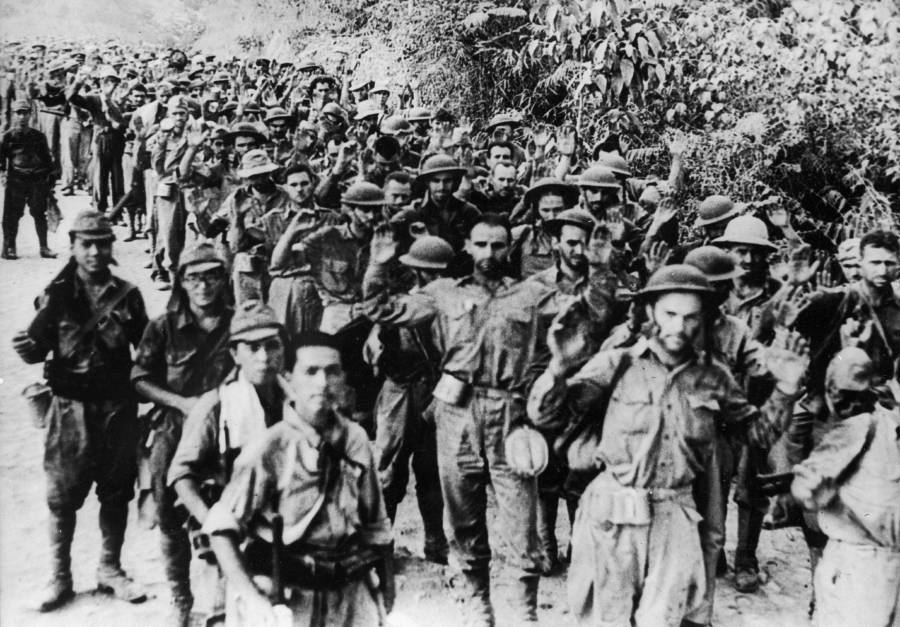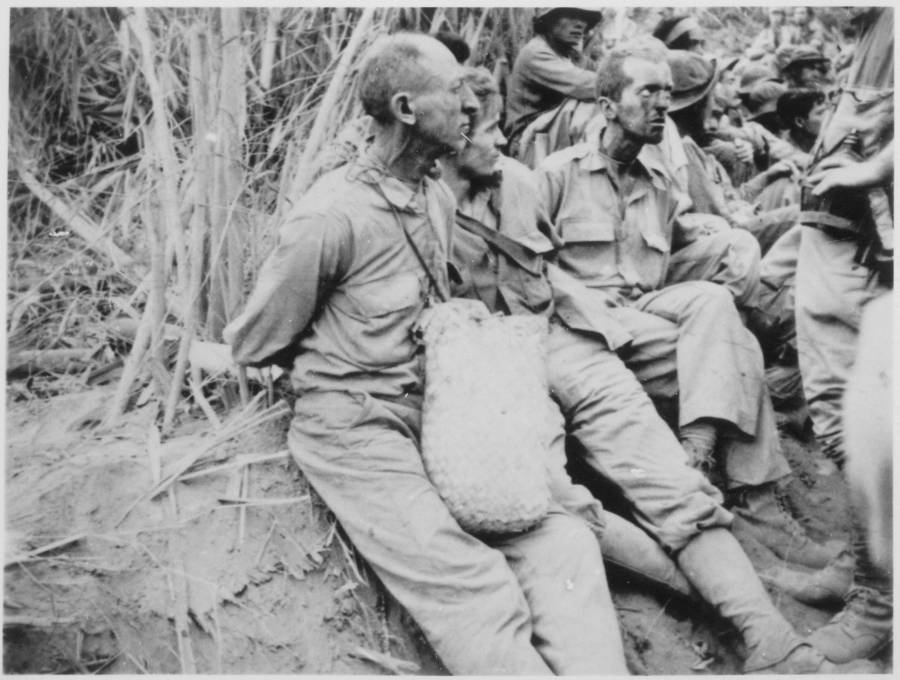The Bataan Death March

The LIFE Picture Collection/Getty ImagesAmerican and Filipino soldiers during the Bataan Death March.
In April 1942, some 75,000 Filipino and American troops were forced to march 65 miles in excruciating conditions after surrendering to Japanese troops on the Bataan Peninsula in the Philippines. The so-called Bataan Death March resulted in the deaths of thousands of men — and stands as one of the most notorious Japanese war crimes of World War II.
The combined American and Filipino forces, part of the U.S. Army Forces in the Far East (USAFFE), had first met the Japanese in battle in December 1941, when Japan invaded the Philippines. With most of the U.S. forces preparing to enter World War II, however, the USAFFE found itself without air or sea support and on half rations during the deadly battle.
After fighting against the Japanese for a few months, the American and Filipino troops eventually surrendered in April 1942. Their Japanese captors then forced them on a 65-mile march to prison camps. But their goal wasn’t just to move their captives — it was to exterminate them.
“Whether they are destroyed individually or in groups, and whether it is accomplished by means of mass bombing, poisonous smoke, poisons, drowning, or decapitation, dispose of them as the situation dictates,” the Japanese War Ministry ordered, per HISTORY. “It is the aim not to allow the escape of a single one, to annihilate them all, and not to leave any traces.”

Department of DefensePrisoners during the Bataan Death March. At least 17,000 American and Filipino troops died during and after the march.
In the end, it’s been estimated that 17,000 to 27,000 Allied troops — most of whom were Filipino soldiers — died during and after the Bataan Death March. And many of them met extremely gruesome ends.
“One of the POWs had a ring on and the Japanese guard attempted to get the ring off,” remembered an American survivor. “He couldn’t get it off and he took a machete and cut the man’s wrist off and when he did that, of course, the man was bleeding profusely. [I tried to help him] but when I looked back I saw a Japanese guard sticking a bayonet through his stomach.”
After the war, Japanese Lieutenant General Masaharu Homma was found guilty of this war crime and sentenced to death.





